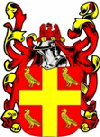Big B
Posts: 4870
Joined: 6/1/2005
From: Old Los Angeles pre-1960
Status: offline

|
I ran across this article,
http://home.att.net/~jbaugher1/f2a_7.html
The meat of the technical spec's are below, can this be verified? If so - the Buffalo Mk I stats are indded short of the ball park...
quote:
Brewster Buffalo Mk I
Last revised December 26, 1999
In early 1940, the British Purchasing Commission ordered a total of 170 Model 339Es in two separate contracts under the British designation Buffalo Mk. I. This was a major turnaround, since as recently as October of 1939 the British Air Ministry had declared the Brewster fighter as unsuitable for RAF use. However, they were deemed suitable for use in the Far East.
The 339E was basically a denavalized variant of the F2A-2, powered by an export-approved Wright R-1820-G105 Cyclone engine of 1100 hp. A number of changes were made to bring the aircraft up to current European combat standards: a British-built Mark III reflector gunsight replaced the ring-and-bead arrangement, armor plate was provided for the pilot, and armored glass was added to the wind screen. The Curtiss Electric cuffed propeller was replaced with a 10-foot one-inch Hamilton Standard propeller. The 339E was the only Buffalo variant to feature an internal gun camera. The small retractable naval-type tail wheel was replaced by a larger fixed tail wheel.
These changes brought the gross weight to 6500 pounds, almost a thousand pounds heavier than the standard F2A-2. The maximum speed was lowered to 330 mph and the rate of climb was lowered to only 2600 feet per minute. In addition, this increased weight raised the wing loading, increased the landing speed, and adversely affected the maneuverability. Another problem was that the Buffalo Mk. I did not use the same fuel line pressurization system as the F2A-2, and fuel starvation problems were often experienced above 18,000 feet.
The Wright Cyclone R-1820-G105 engine installed in the Buffalo Mk. I had been selected in part because there were sufficient numbers of this engine available at the time to meet the first British contract. However, when the second contract was issued, there were not enough new Cyclone engines available, and Brewster was forced to purchase used Cyclone engines from commercial airlines which had been using them to power their Douglas DC-3 airliners. These used engines were returned to Wright, which remanufactured them to -G105 standards.
The first three production Model 339Es were sent to Great Britain in April of 1941 for trials. The remaining Buffalos of the British order were shipped directly to the Far East to serve with units in Malaya, Singapore and Burma. The first Buffalos arrived in Singapore in the spring of 1941.
Five Commonwealth squadrons were formed around the Buffalo -- Nos. 67 and 243 Squadrons, RAF; Nos. 21 and 43 Squadrons of the RAAF; and No. 488 Squadron of the RNZAF. No. 67 Squadron was based in Burma and the other four were stationed at bases near Singapore. Each squadron was issued with 15 aircraft. A shortage of pilots prevented the formation of additional squadrons, and many Buffalos were placed in storage. Many of the pilots in the Commonwealth Buffalo squadrons were relatively new and inexperienced, and some 20 Buffalos were lost in training accidents during the autumn of 1941.
War in the Burma/Malaya theater began on December 8, 1941 with a Japanese landing on the Malayan coast. The Brewsters did experience some initial successes against Japanese Army Air Force Ki-27s and Ki-43s, and there were at least three Commonwealth pilots who became aces during this period. However, when the Japanese Navy A6M Reisen (Zero Fighter) appeared, the Buffalo was completely outclassed. The Zero was faster, more maneuverable and had a heavier armament. In an attempt to improve the Buffalo's performance, ground crews removed all unnecessary equipment to lower the weight, sometimes replacing the 0.50-inch machine guns with lighter 0.303-inch guns and reducing the ammunition and fuel load. However, these modifications did not even come close to closing the performance gap between the Buffalo and the Zero.
|
 Printable Version
Printable Version


































 New Messages
New Messages No New Messages
No New Messages Hot Topic w/ New Messages
Hot Topic w/ New Messages Hot Topic w/o New Messages
Hot Topic w/o New Messages Locked w/ New Messages
Locked w/ New Messages Locked w/o New Messages
Locked w/o New Messages Post New Thread
Post New Thread